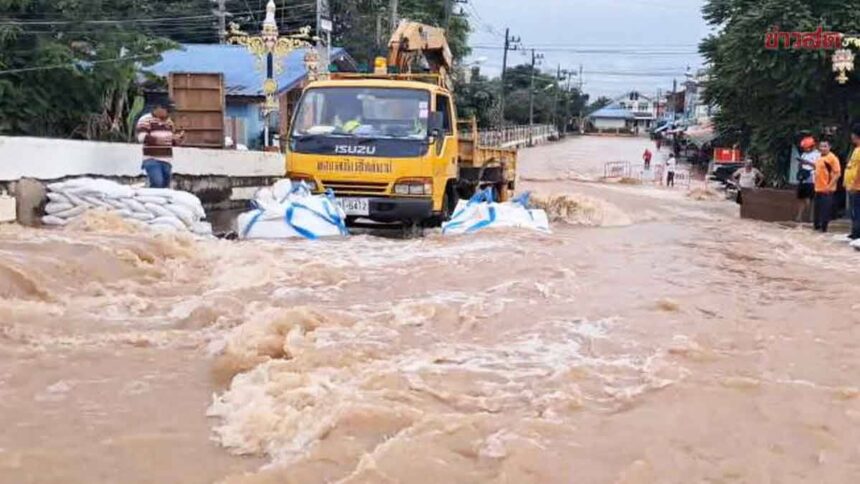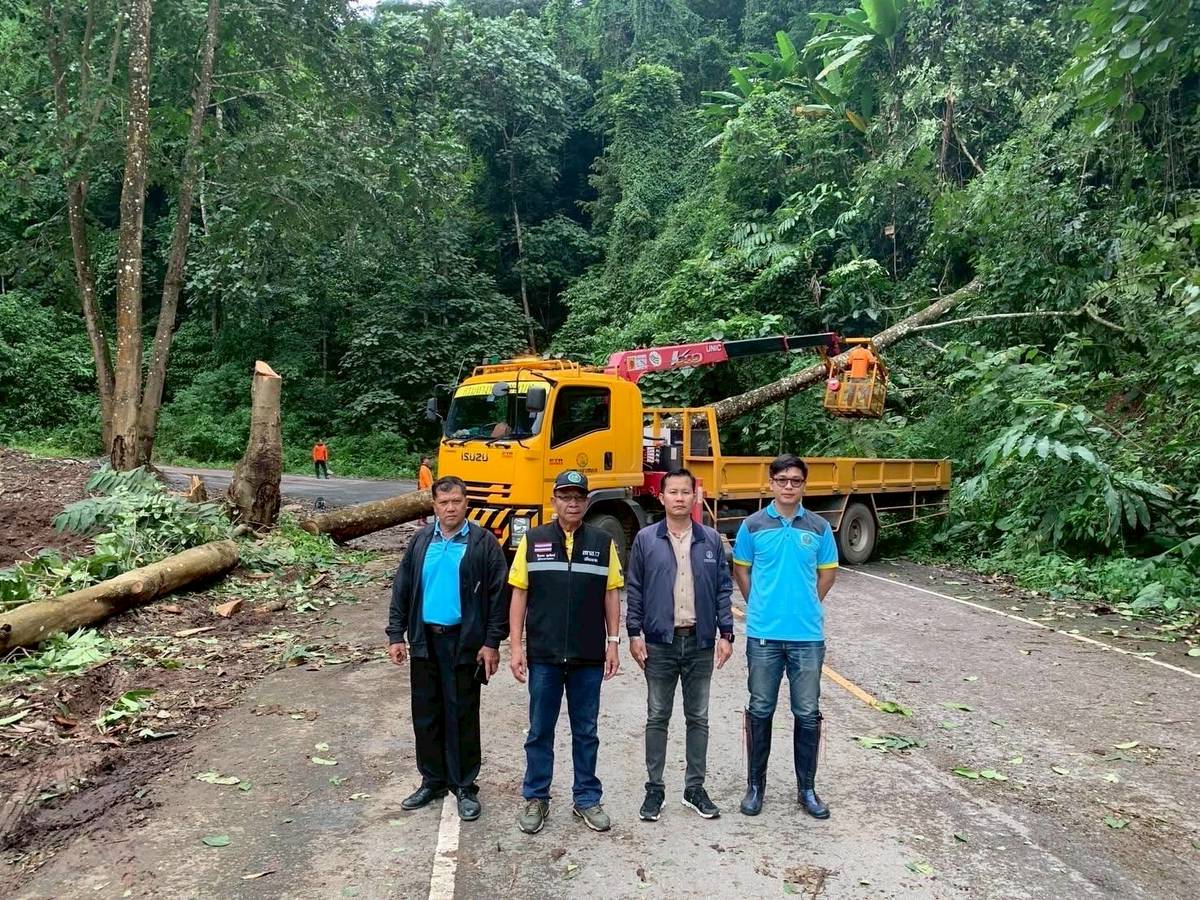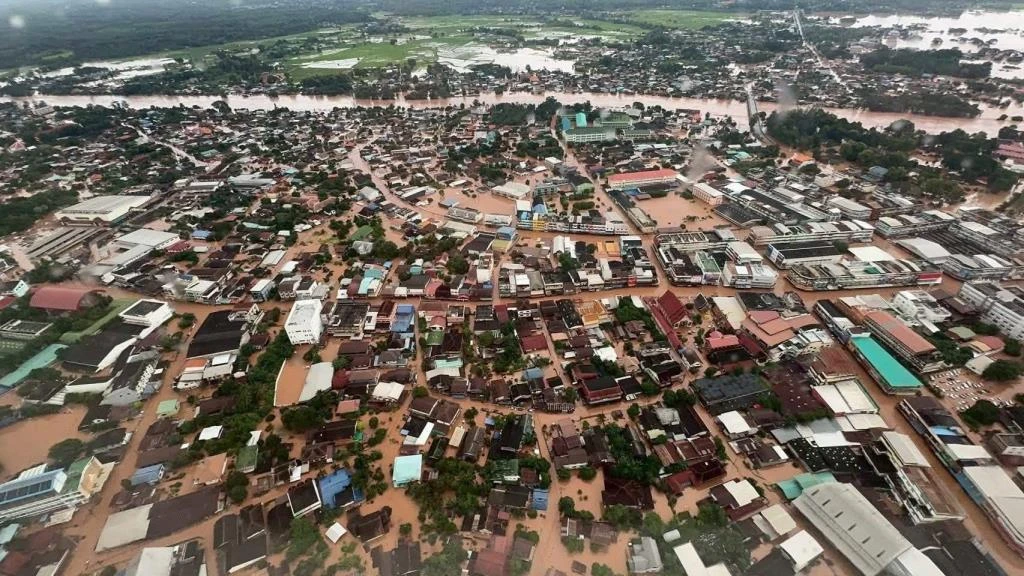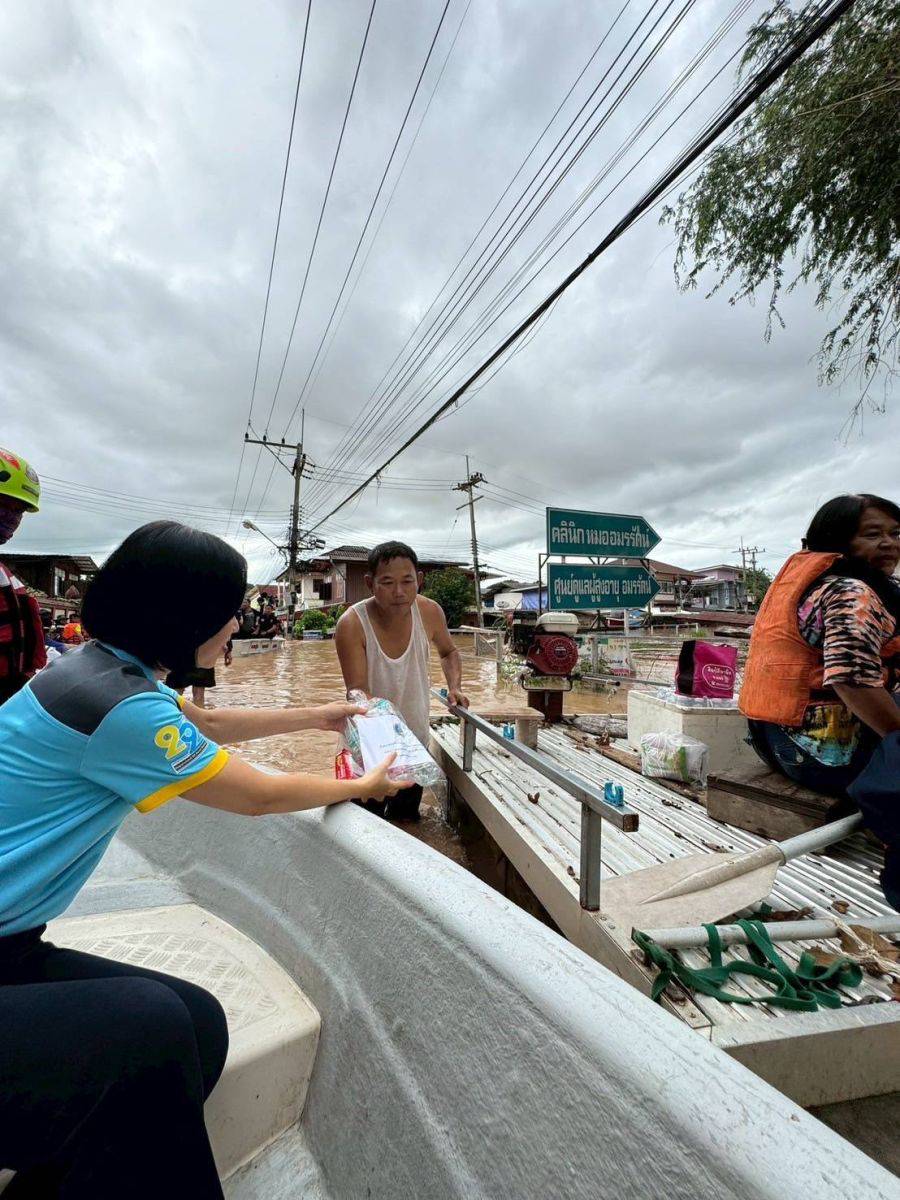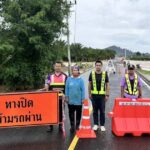CHIANG RAI – On 26 July 2025, the National Disaster Prevention and Mitigation gave an update on the recent floods and landslides caused by tropical storm “Wipha.” The storm’s effects have been felt since 21 July, even though it has since weakened to a low-pressure area.
The storm brought sudden floods, forest run-off, and river overflows across eight northern Thailand provinces: Nan, Chiang Rai, Phayao, Lampang, Chiang Mai, Mae Hong Son, Phrae, and Loei. In total, 50 districts, over 246 subdistricts, and 1,348 villages have reported damage, affecting 33,900 households and 115,858 people. One person remains missing.
Currently, flood situations persist in five provinces: Nan, Chiang Rai, Phayao, Lampang, and Phrae. The impact spans 37 districts, 201 subdistricts, and 917 villages. About 25,241 households and 83,820 people are affected. Water levels in most areas are dropping.
Mr. Phaskorn Boonyalak, Director-General of the Department of Disaster Prevention and Mitigation (DDPM), shared that while water has started to recede in several locations, all relevant agencies are working hard to address issues and support victims.
Roads Blocked by Landslides
Teams of emergency workers, rescue tools, and machinery have been deployed from various sectors, including the military, local authorities, police, foundations, local administrations, volunteers, and residents, to provide direct assistance.
Public safety is the top priority. Teams are helping people meet basic needs, supplying food, medical care, health services, and basic utilities. They are also working fast to drain floodwater from affected areas.
For those needing refuge, people with limited mobility and vulnerable groups have been moved to safe shelters. Police and defence volunteers are helping to secure these areas. Royal kitchens and field kitchens have been set up to cook meals for those impacted. Medical teams are supporting both physical and mental health, providing necessary medicine and supplies.
Phaskorn added that officials are guiding people through flooded areas, putting up warning signs and alternative route information, and working to clear water from roads to minimize disruption to daily life.
Nan City is Completely Flooded
As conditions improve in certain provinces, damage assessment is now underway. DDPM has distributed 18,900 relief kits to affected provinces and sent help from regional disaster centres in nearby safe areas. Deputy Director-General, Mr. Saharat Wongskulwiwat, and his central team have also been assigned to support relief work in Nan and other northern provinces.
DDPM has sent out regular Cell Broadcast warnings to keep people informed about risks. From 20 July onward, 47 alerts have gone out, including 38 flood warnings and nine for landslides.
On July 26, 2025, the National Disaster Warning Centre monitored water levels in the Yom River across Wang Chin district in Phrae and Sukhothai.
The river has overflowed in some spots, and levels continue to rise. Alerts were sent out twice to residents along the rivers in districts like Mae Koeng, Mae Pak, Wang Chin, and Na Phun in Phrae, as well as Wang Yai, Wang Thong in Si Samrong, Pak Khwae, Yang Sai, Pak Phra, and Thani in Mueang Sukhothai.
Relief Work Northern Thailand
People were told to move belongings and cars to higher ground, evacuate if needed, and move vulnerable groups such as the elderly and bedridden to safety, following instructions from officials.
If any area faces severe danger or a major risk to people, local authorities should report to the disaster warning centre right away so a Cell Broadcast alert can be sent without delay.
Ms. Chatchadaporn Boonpeeranat, Deputy Director-General of DDPM, said that her team is ready to coordinate further assistance so provinces can solve problems and help people quickly. She called for all provinces to keep providing help and recovery as directed by the Interior Minister.
Provinces should keep monitoring water levels and weather. If there’s a risk to people or property, they must contact the National Disaster Warning Centre to send Cell Broadcast alerts and keep people prepared, around the clock.
In areas where flooding has eased, teams are cleaning homes, streets, and public areas, and sending repair crews to restore houses, electricity, and water supplies as soon as possible. Damage checks are ongoing, and help will be given according to the rules and guidelines.
Ms. Chatchadaporn also advised provinces along the Mekong to stay alert for possible river overflows. She urged early steps to protect key locations in towns, hospitals, and economic centres. Temporary shelters and rescue equipment should be ready so that teams can act fast, day or night, if anything changes.




